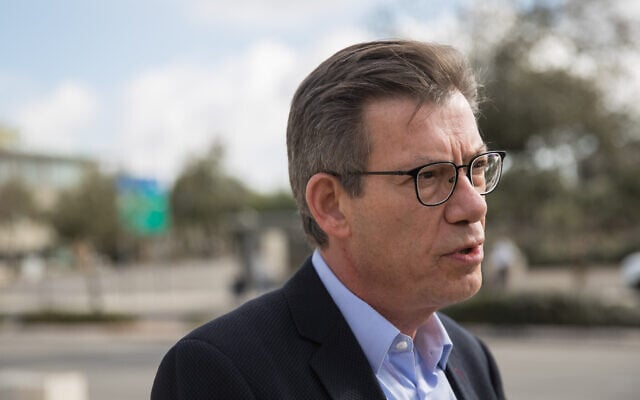


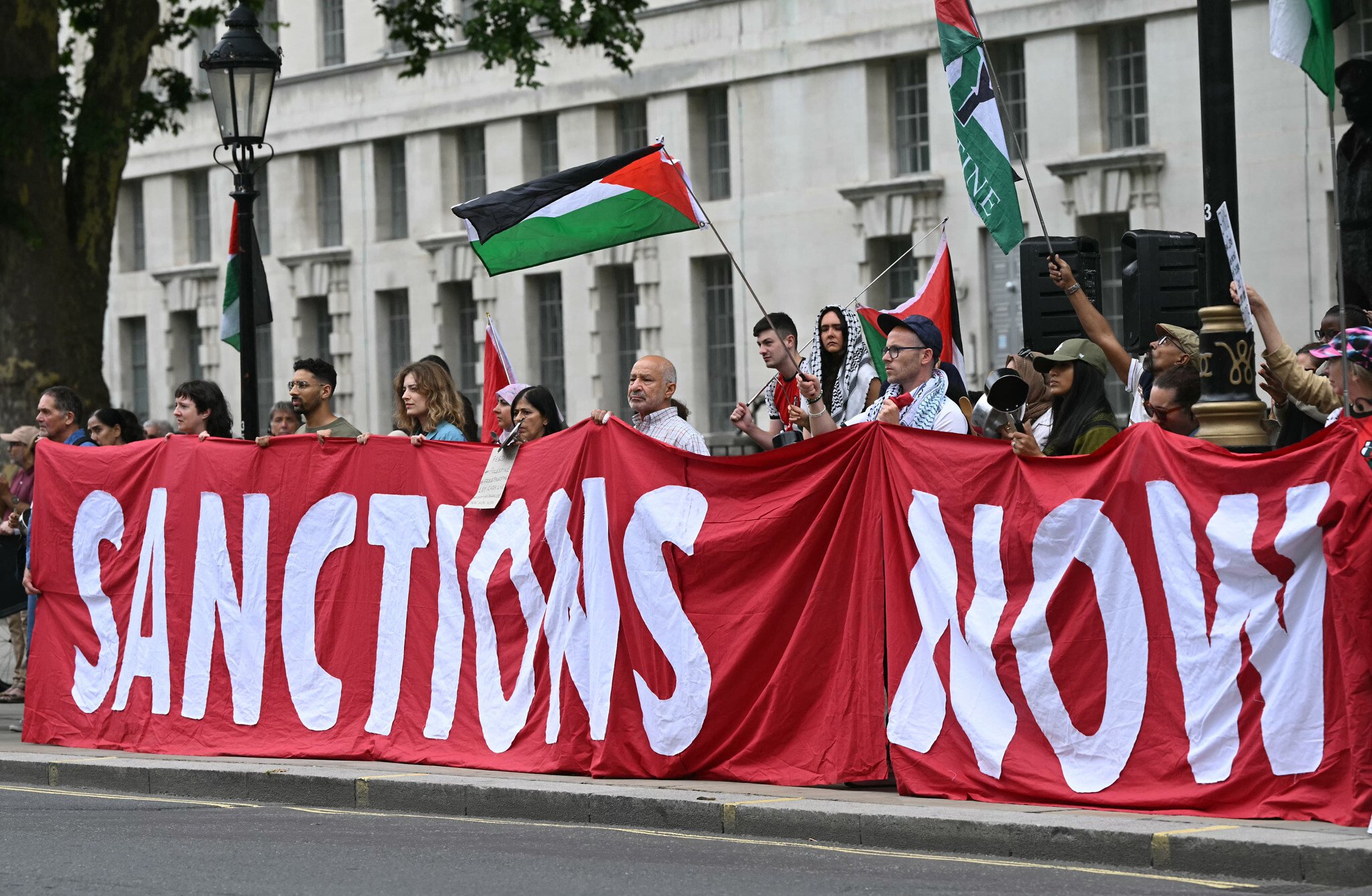
For the past almost 22 months, as Prime Minister Benjamin Netanyahu likes to note, Israel has been fighting a seven-front war.
Speaking to an Evangelical Christian audience in Jerusalem this week, Netanyahu added an eighth front — “the battle for truth.”
While it fights Iran, Hamas in Gaza, Hezbollah in Lebanon, the Houthis in Yemen and groups in the West Bank, Syria and Iraq, Israel is also engaged in an information war — and on that battlefield, it is losing.
Major international news outlets have increasingly portrayed Israel as a heartless aggressor in Gaza, running front-page images of skeletal children suffering starvation in the Strip.
Evidence showing that some of them were misleading or staged has done little to repair Israel’s image.
On Monday alone, US President Donald Trump, his deputy JD Vance, and British Prime Minister Keir Starmer all cited these viral images in their calls for drastic policy changes in Gaza.
Last week, 28 Western countries issued a joint statement insisting on an “unconditional ceasefire” in the territory, saying civilian suffering had “reached new depths” and condemning the “inhumane killing” of innocents.
Regardless of the veracity of these claims, the diplomatic and social fallout is clear. Among allies and in Brussels, punitive measures are being weighed, if not already carried out. A rising tide of European countries has in recent days announced their intention to unilaterally recognize a Palestinian state or to consider doing so if Israel doesn’t end the war and meet other conditions.
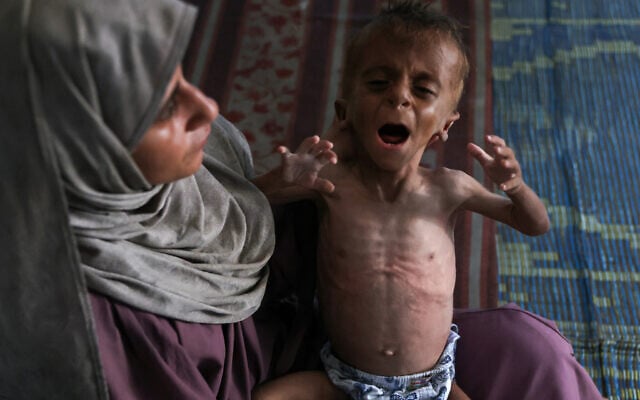
While much of the backlash stems from Israeli policies themselves, the damage is compounded by ineffective and sometimes nonexistent public messaging.
Former and current officials in the Prime Minister’s Office, the Foreign Ministry, and the IDF’s Spokesperson’s Unit acknowledged to The Times of Israel that the breakdown results not only from hostile actors, a complex war zone and government policy, but also from internal dysfunction. Current officials, including spokespeople, all declined to speak on the record about the issue, a standard practice reflecting the state of media engagement among Israel’s powers that be.
Several cited unprecedented efforts at reform, but critics warn that without drastic changes, the damage will only continue to snowball.
Responsibility for coordinating Israel’s global messaging officially lies with the PMO’s Public Diplomacy Directorate.
For over a year, amid unprecedentedly brutal battles in both the military and diplomatic arenas, the directorate’s top post, head of public diplomacy, has remained vacant.
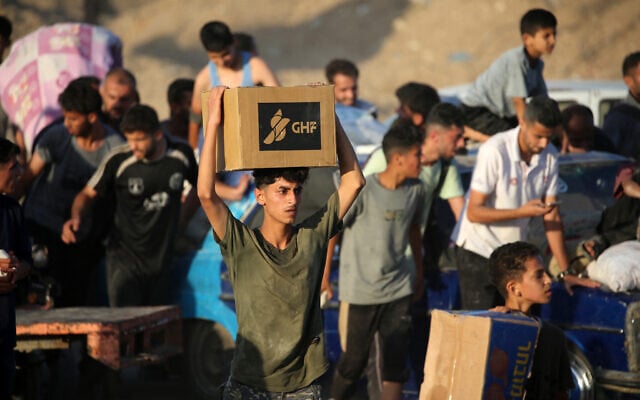
“Think about it,” said Gadi Ezra, who filled the number two role in the directorate under former premier Naftali Bennett. “We’ve been fighting a war for over 650 days with a [military] chief of staff — but we’re fighting a war of public perception without one.”
This is partly because “Israel still does not regard perception management as a core component of its national security doctrine,” Ezra added.
Asked about the PMO’s ostensible lack of prioritization, three officials with knowledge cited the fixation with Hebrew-language media over foreign outlets within Israel’s halls of power.
“Ninety percent of the communications of this country are still internally focused,” said one. “There is a view that the government’s legitimacy comes from Israel — not from London, Paris or Berlin.”
There is a view that the government’s legitimacy comes from Israel — not from London, Paris, or Berlin.
Most countries, unsurprisingly, prioritize domestic opinion over foreign attitudes. But most countries aren’t in Israel’s position.
The alarm bells predate the images of starvation in Gaza that suddenly went viral over the past two weeks. Speaking over a month ago, one official fretted that “gruesome, terrible pictures are being aired and doing havoc to our public opinion. But none of this is a relevant part of the Israeli discussion.”
In early June, as reports of deadly IDF shootings near aid sites run by the Israel- and US-backed Gaza Humanitarian Foundation began to gain international attention, Netanyahu privately called for “much more of Israel’s voices in international media — more interviews, more briefings,” according to one official.
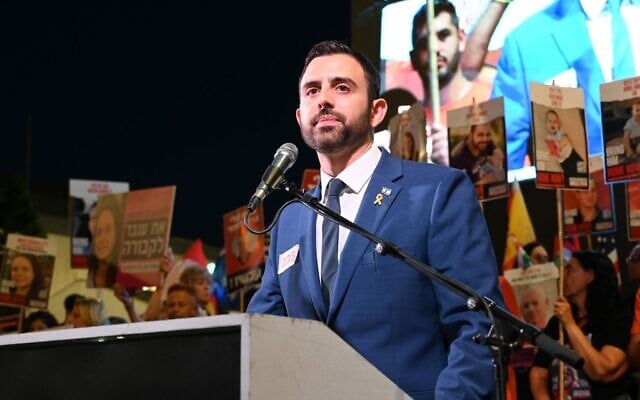
But with no central authority and a semi-dismantled, understaffed Public Diplomacy Directorate, implementation remains fragmented.
“There is good interaction between bodies, but the fact that there is no Public Diplomacy Directorate leadership for a year now doesn’t help,” said a Foreign Ministry source.
At the start of the war, an ad hoc but adept lineup of spokespeople — Eylon Levy, Mark Regev, Tal Heinrich and Avi Hyman — was employed by the PMO to deliver Israel’s positions to foreign audiences.
“That has since been unraveled,” lamented Levy, who became something of a celebrity as government spokesperson from the war’s start until March of last year, when he was pushed out.
Levy, who now runs an independent “Citizen Spokespersons’ Office,” funded by the Diaspora Ministry and donations, said the issue goes beyond airtime: “It’s about engaging journalists and giving them credible, timely information.”
He added that disagreements in Israeli society about how to both bring the hostages back and destroy Hamas make “presenting the national interest much more difficult, but there is absolutely a role for the Israeli public here.”

Israelis must also realize the implications, “if the mud-slinging campaign against Israel succeeds.” Were it to become “the baseline of common knowledge in Europe that Israel is committing genocide… do [Israelis] think they’re going to continue doing business with these countries? Do they think they’re going to be able to travel to these countries?”
Israelis might be starting to come to that realization. Over the last 10 days, Jews and Israelis abroad have been barred from vacation venues, violently attacked, and, earlier this year, even murdered by people shouting “Free Palestine.”
In terms of official reform, “if any change happens, it’s going to happen from [the Foreign Ministry.] It’s not going to come from the Prime Minister’s Office…I genuinely have no idea what they’re doing,” Levy said.
The Prime Minister’s Office did not respond to a request for an interview on the matter.
Messages about Israel’s wartime conduct depend largely on information coming from the IDF, the only Israeli body authorized to verify military activity inside Gaza.
“Israel’s public diplomacy machine has multiple players, and the most important player in terms of information is the IDF,” said one non-military official.
No official may release information about specific military actions without the IDF’s approval. Because this information can take hours to gather and approve, the army often becomes a chokepoint for official Israel in a media environment where narratives are often shaped faster than facts can be verified.
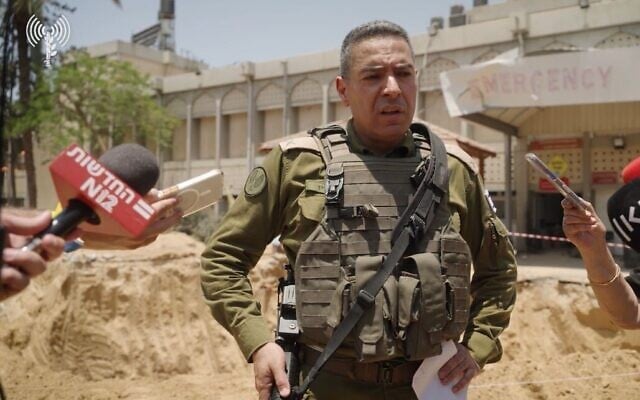
“If you don’t have the information, you can’t comment. When you have a picture or a quote saying 31 killed, and no one is countering it for hours, that becomes the narrative,” the official continued.
The IDF Spokesperson’s Unit, responsible for the army’s media and public relations, has a media war room that coordinates real-time responses to operational events across the IDF.
“We’re able to receive information from all sources — from the Chief of Staff’s office, Southern Command, the divisions, the brigades. That’s how we handle it,” said a military official who declined to speak on record.
Another army official, also speaking anonymously, said that response time greatly depends on the circumstances. In more straightforward cases, the IDF can respond within minutes, but “many times, it takes hours to check, and by the time we have the answer, it’s not relevant anymore.”
Many times, it takes hours to check, and by the time we have the answer, it’s not relevant anymore.
Hamas manipulates the battlefield with this in mind, the official charged. Troops on the ground “frequently face cases referred to as ‘legitimacy traps’” — incidents in which Hamas uses civilian disguises or civilian infrastructure to create a misleading narrative. The terror group was also accused of using staged footage or even AI-generated images to shape perception.
Humanitarian aid sites are a case in point. Reported incidents of deadly IDF fire at and near chaotic Gaza Humanitarian Foundation distribution sites have mounted — some confirmed by the army as “warning fire.” The IDF generally disputes the alarmingly high casualty totals reported by Hamas-controlled authorities in the Strip as inflated, but is unable to provide counts of its own.
According to Israel, Hamas, threatened by the GHF’s efforts, actively fuels the disorder by inciting unrest, targeting aid workers and intimidating civilians.
By all accounts, troops have repeatedly opened fire when crowds of hungry Gazans come near to soldiers guarding areas where aid sites are located. The troops are focused more on tactical priorities, such as protecting themselves from what they perceive as danger, than on how the aftermath will look to the world.
“Troops don’t always realize they’re walking into a ‘legitimacy ambush,’” the official said. “In their mindset, everyone in front of them is trying to kill them.”
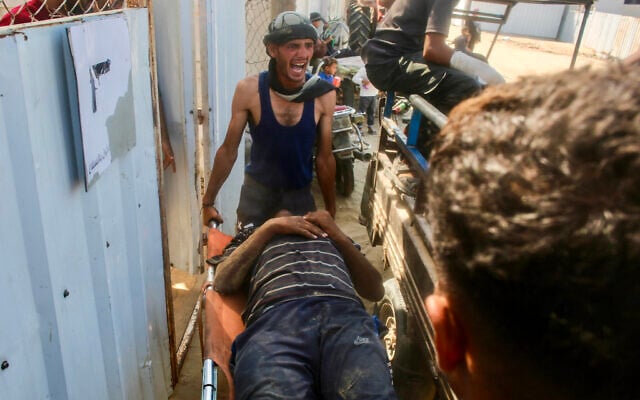
But reconstructing events — who was shot, whether it was justified — takes time, and “happens as troops continue to fight, not over coffee in Tel Aviv.”
No matter how dramatic a report, “the most important thing for us is to not lose credibility,” said the second official. “Our response to Hamas making up numbers is not to make up numbers ourselves.”
Still, the official insisted that the system is adapting. In the last two months, the IDF has employed additional training and manpower to more readily cope with media challenges, they said.
“There are teams assigned to specific topics — both in the Spokesperson’s Unit and on the ground,” including commanders trained to recognize which incidents are likely to make headlines and “assign manpower” accordingly, shaping everything from messaging to operational planning.
The official cited Israel’s public messaging during its war against Iran last month as a sign of improved military messaging.
“We planned ahead, prepared statements, brought intelligence,” they said, “and the world understood what we did and why… accordingly.”
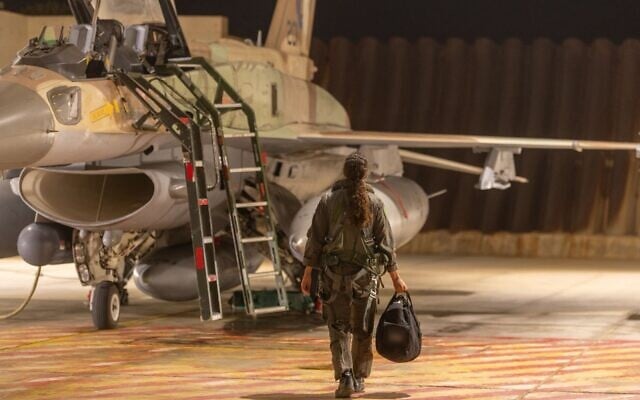
In the Iran operation, Israel’s media engagement was proactive, allowing it to control the narrative, the official said. But in Gaza, by contrast, Israel is often being forced to answer claims put out by Hamas, placing it at a disadvantage.
“But we’re getting better,” they added.
In the early months of the war, the IDF had greater control of messaging, according to Maj. (res.) Doron Spielman, who was at the heart of the effort as an IDF spokesperson to the foreign media at the time.
“For the first six to eight months, the only people really speaking on a large scale were the IDF,” he said. “The Foreign Ministry was… pretty much nonexistent. They worked with diplomats, they worked with governors, they were behind the scenes, but from a public relations point of view, they were not at all involved for the first six months.”
The Foreign Ministry did not respond to a request for comment on its initial wartime activity.
“We had diplomats in Sderot by October 9. They saw the horrors firsthand, and that helped justify Israel’s initial moves in Gaza,” Spielman added. “The first 100 days, militarily and in terms of coverage, were strong. [Former IDF spokesperson Daniel] Hagari spoke regularly, and we got good traction internationally.”
But by around 90 days into the war, Spielman’s impression was that interest in Israel’s version of events had already gone down.
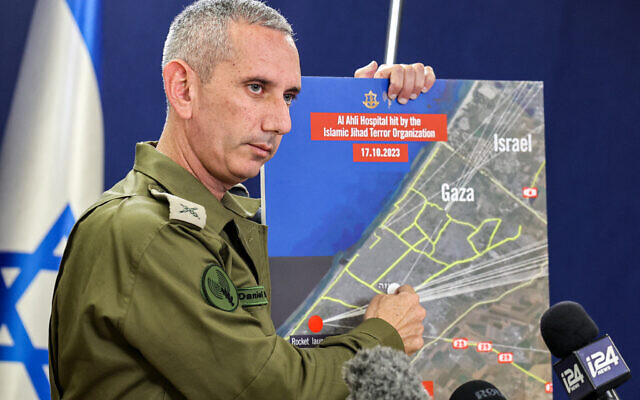
“The press is no longer very much interested in what Israel has to say. They’re taking their cues from the field — from Gaza, from health services, from the Gaza Health Ministry — and very little from the IDF,” he said.
Part of the reliance on Gazan sources stems from the fact that Israel refuses to allow journalists into the Strip, whether Israeli or foreign, ceding the ground to Hamas-controlled authorities and Gaza-based stringers.
The army has conducted dozens of media tours inside the Strip, some for foreign press but mostly for Israeli reporters, though the highly curated and tightly controlled visits are a far cry from the type of independent access being pushed for.
“For a conflict of such global importance, not being able to enter Gaza this far into the war has made independent reporting extremely difficult,” said Foreign Press Association chairman Tania Kraemer, whose group is suing for access. “It is our job to be on the ground, even if it is dangerous, to report what we see, to investigate conflicting claims.”
Spielman said he sensed a broader decline in IDF efforts to take the press into Gaza, saying it was the cause of “big pushback” from the media.
Yet he added that “if we did take them in, I’m not so sure that it would help.”
The press is no longer very much interested in what Israel has to say.
A member of the IDF Spokesperson’s Unit responded that “dozens” of foreign journalists have been guided by the IDF in Gaza since January, though they would not specify how often the tours had taken place. They could not comment on whether there was any intention to allow foreign journalists into Gaza independently. The state has defended the ban as necessary to protect both journalists and troops.
Ultimately, though, military sources said the burden of explaining Israel’s actions to the world can’t fall on the army alone.
“The IDF Spokesperson deals with military messaging,” said one official, but broader image-building “is everyone’s responsibility. ”
As Israel flounders in the war of perception, Foreign Minister Gideon Sa’ar appears to be assuming the mantle no one else has claimed.
“The Foreign Ministry is the most appropriate tool for this job,” said one senior official in the ministry. “If we insist — and take responsibility — we can win the war of perception.”
In November, Sa’ar announced a NIS 545 million ($163 million) budget for the ministry’s public diplomacy efforts — later reduced to NIS 532 million ($159 million) — but officials noted that funds only reached the ministry in April, with just around NIS 60 million spent on the effort as of June.
“If you think about it, the budget is actually not a lot,” the senior official said. “It comes to less than NIS 50 million a month.”
Deputy Foreign Minister Sharren Haskel promised a forthcoming action plan in December, but her office declined repeated interview requests and did not provide written responses in recent weeks. The ministry did not provide a budget plan.
Long referred to as hasbara, a term used to denote both public relations and propaganda that has been freighted with negative baggage in recent years, the ministry now brands its approach as toda’a — which translates to “awareness” or “consciousness”— an apparent shift toward broader, more proactive messaging.
In separate conversations outlining the Foreign Ministry’s new strategy and “working principles,” two officials pointed to signs of progress, saying the ministry has “broken its own records” since January.
From January to early June, the ministry said it held more than 25 briefings and press conferences for the foreign press in Jerusalem, and continues to hold at least one briefing a week for the foreign press. This marks a sharp rise compared to the past two years: only four such press events were held in 2024, and none in 2023. In the digital space, the ministry launched around 20 campaigns and produced more than 300 videos, it said, claiming to have reached over 650 million impressions.
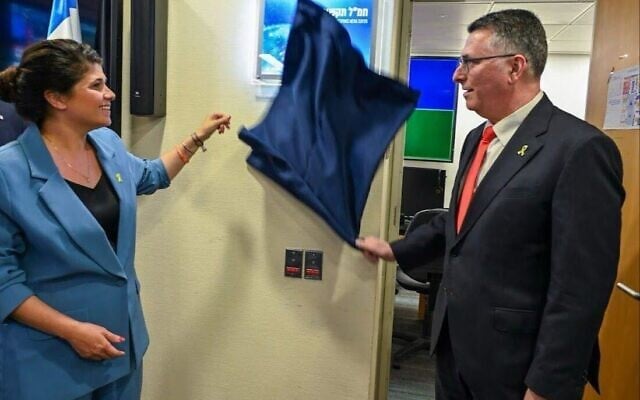
“It’s unprecedented — the numbers, the scope, the scale of our activity. It’s huge. We’re trying to be everywhere,” one official said. “Did we make the world’s concerns disappear? No. Is there a silver bullet? Probably not. But can we do everything possible? Absolutely. And we’ll keep growing it.”
A key part of the new strategy is the “media war room” — a monitoring system launched five months ago to track real-time coverage and sentiment across global and social platforms. The system operates on two levels. Its micro goal, officials said, is to flag content with major factual errors or missing Israeli voices, “marking it for handling.”
Its macro goal is to monitor broader narratives — how much space a topic occupies globally and how it’s framed — to help Israel’s message accordingly: “It’s not just about what we say — but when we say it.”
“It’s a tool that we’re still learning to work with, that we haven’t yet taken full advantage of,” the official added.
We knew we had to have the narrative ready the moment the planes began to fly.
Responding to criticism that the ministry’s approach is too reactive, the senior official insisted otherwise, saying, “Every day there are new initiatives.”
Delegations are a core part of the strategy, the official added. The ministry aims to bring 550 groups — including influencers and policymakers — to Israel by the end of 2025, and currently has 200 more delegations planned. It is also advancing civilian public diplomacy efforts, such as J50, a forum of 50 Jewish community leaders promoting cooperation and unified messaging. It is also working with influencers, believing that “messages are more effective when delivered by popular individuals rather than by the ministry.”
The ministry is also supporting “a number of projects” with Evangelical Christian communities worldwide, noting in a statement that “prominent leaders will arrive and significant events will be held with their participation.”
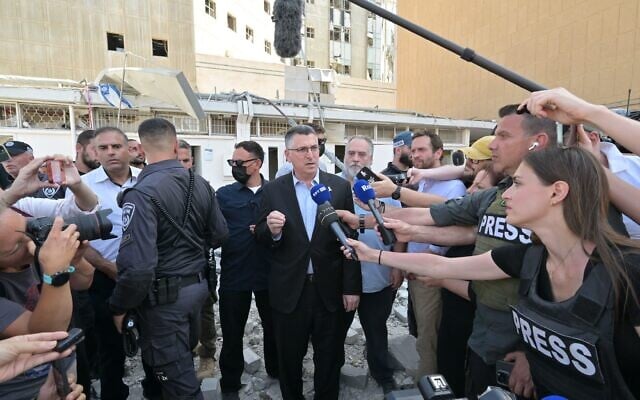
A key proof-of-concept for the ministry came last month during the Iran campaign. With only six staffers aware of the pending strike, the Foreign Ministry quietly prepared its messaging in advance.
“We knew we had to have the narrative ready the moment the planes began to fly,” said the senior official. According to data from the media war room, the campaign reached 20% engagement globally — up from the usual 2–3% — and unprecedented penetration of Persian-language audiences, 90% of which were in Iran.
Still, sources acknowledge the effort is in its early stages, and it continues to face resistance from a harsh media climate, bureaucratic lag, and shifting political priorities.
At Sunday’s event, Netanyahu railed against a campaign of lies targeting the Jewish state, one he says was largely initiated by Hamas.
Since October 7, the terror group has indeed weaponized the suffering of Gazans to inflame global opinion and restrict Israel’s freedom of action. Cloaked in the fog of war, where almost no source can claim credibility, the current media atmosphere best serves Hamas.
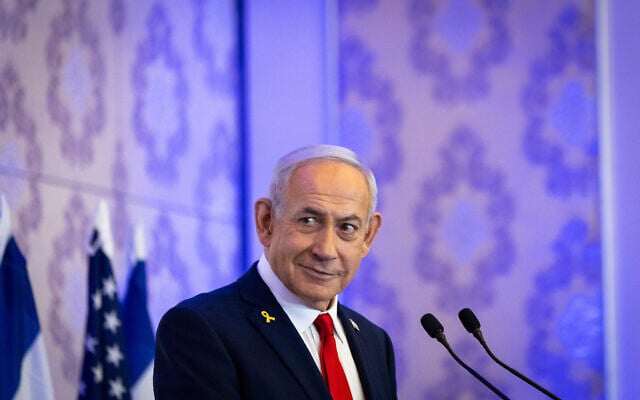
But against Hamas’ tactics, Israel’s public diplomacy machine remains fragmented, under-prioritized, and slow. “Where is the super-duper communication strategy, social media strategy? We’re light years away from that,” assessed one official with knowledge of the PMO’s work.
Emanuel Nahshon, a former Foreign Ministry spokesperson, ambassador to Brussels, and deputy head of Public Diplomacy, pointed out that even if that weren’t the case, the success of Israel’s messaging relies not only on its words, but its policies.
Nahshon, who resigned from the ministry last year as he “didn’t want to represent this government,” described the current state of public diplomacy as “catastrophic.”
There’s no political or diplomatic strategy — so professionals don’t know what message to promote.
“But the blame lies fair and square on the Israeli government,” he said. “There’s no political or diplomatic strategy — so professionals don’t know what message to promote.”
Beyond that, he argued, Israel misunderstands global perception and misuses communication tools. “Our enemies master short, visual messaging, while we rely on long explanations and blaming the other side.”
He called the system outdated: “All our spokespeople are middle-aged white men — I include myself. But you need young people to speak to young people.”
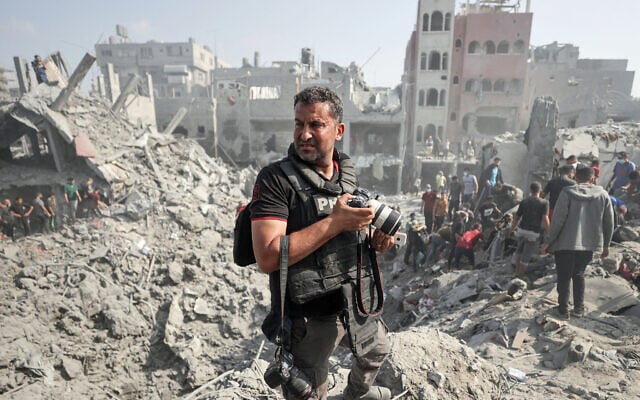
Nahshon outlined three conditions for effective public diplomacy, the first being “a fundamental narrative” — something that “Israel has lost.”
“In the early years, it was clear: a people returning home after 2,000 years, rebuilding a sovereign state while extending a hand in peace. Today, we no longer agree on what Israel’s story is — and if we cannot agree among ourselves, how can we convince anyone else?” he asked.
In addition, Israel needs a clear strategy and a functional structure. Without these foundations, he warned, “it won’t work — no matter how right you are.”
Within that challenge, Spielman argued that “Israel should not be setting its war goals based on international pressure.” Chasing foreign sympathy “never works” for Israel, and moments of strength come not from slick campaigns but from conviction. One such moment, he argued, came through Netanyahu’s blunt response last year when former US President Joe Biden threatened to withhold arms if the IDF invaded Rafah: “If we have to stand alone, we will stand alone. If we need to, we will fight with our fingernails.”
Levy saw the same moment as a symptom of failure, not strength, however. “There’s no reason we should have to fight with our fingernails,” he said. “We should have the best ammunition because we’ve persuaded our allies. But we haven’t even tried.”
One thing is certain, as the war grinds on and Israel’s legitimacy erodes in the eyes of its allies: This campaign isn’t being fought only in Gaza — and without political or national will, Israel cannot prevail on the eighth front.


